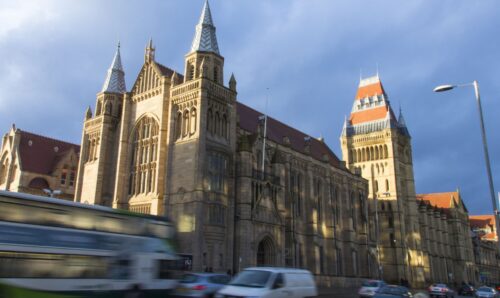Heritage: Michael Smith – The Nobel Prize in Chemistry 1993
Chemistry in the real world Research and impact 20 May 2020
Did you know that the Department of Chemistry has been home to 7 Nobel Prize winners at some point in their careers? Find out more about each of them in our new series of posts focusing on Manchester’s proud chemistry history.

Michael Smith is our most recent Nobel Laureate in Chemistry. He was a student with modest means who only narrowly escaped working in the trades. Despite this, his revolutionary work helped break down the barriers of genetic medicine. Read on to find out how his love and commitment to Chemistry lead to his outstanding career.
In 1993, Smith shared the Nobel Prize in Chemistry with Kary Mullis for his work on site-directed mutagenesis. On site-directed mutagenesis is mainly used to examine the structure and biological activity of DNA. In the 1970s, Smith found a way to create specific mutations in genes and therefore the proteins that they encode. Throughout his career, he looked at the potential medical and commercial applications of his work.
Education
Smith was born on April 26, 1932, in Blackpool, England. From a working class family, he first attended a state-run primary school. During this time, not many children from state schools went on to further academic education, however Smith was an exception. Because of his academic abilities Smith was granted a scholarship enabling him to attend a local private school. A further scholarship led to him studying Chemistry here at the University of Manchester. Smith was awarded a BSc then a PhD in 1956 for research into the stereochemistry of diols.
Career
After completing his PhD in Manchester, Smith immigrated to Canada in 1956 to take on a postdoctoral fellowship at the University of British Columbia. For four years he worked on the synthesis of biologically important organo-phosphates.
Smith spent the rest of his life in Canada until his death in 2000. His outstanding career included working at the Fisheries Research Board of Canada Laboratory in Vancouver. He later became a Professor of Biochemistry in the UBC Faculty of Medicine in 1966. He was the founding director of the UBC Biotechnology Laboratory from 1987 to 1995. The founding scientific leader of the Protein Engineering Network of Centres of Excellence and in 1996 was named Peter Wall Distinguished Professor of Biotechnology. Afterwards, he was the founding director of the Genome Sciences Centre at the BC Cancer Research Centre.

Smith was also well known for his generosity and donated all of his Nobel Prize money to research and institutions he believed in. Half was given to researchers working on the genetics of schizophrenia and the other half he gave to the Society for Canadian Women in Science and Technology and to BC Science World. In 2004, The University of Manchester named the biological science research centre after him, the Michael Smith Building.
Find out more
https://www.manchester.ac.uk/discover/history-heritage/history/nobel-prize/
https://www.nobelprize.org/prizes/chemistry/1993/smith/biographical/
https://en.wikipedia.org/wiki/Michael_Smith_(chemist)
https://en.wikipedia.org/wiki/Site-directed_mutagenesis
Words – Olivia Tansey




Leave a Reply